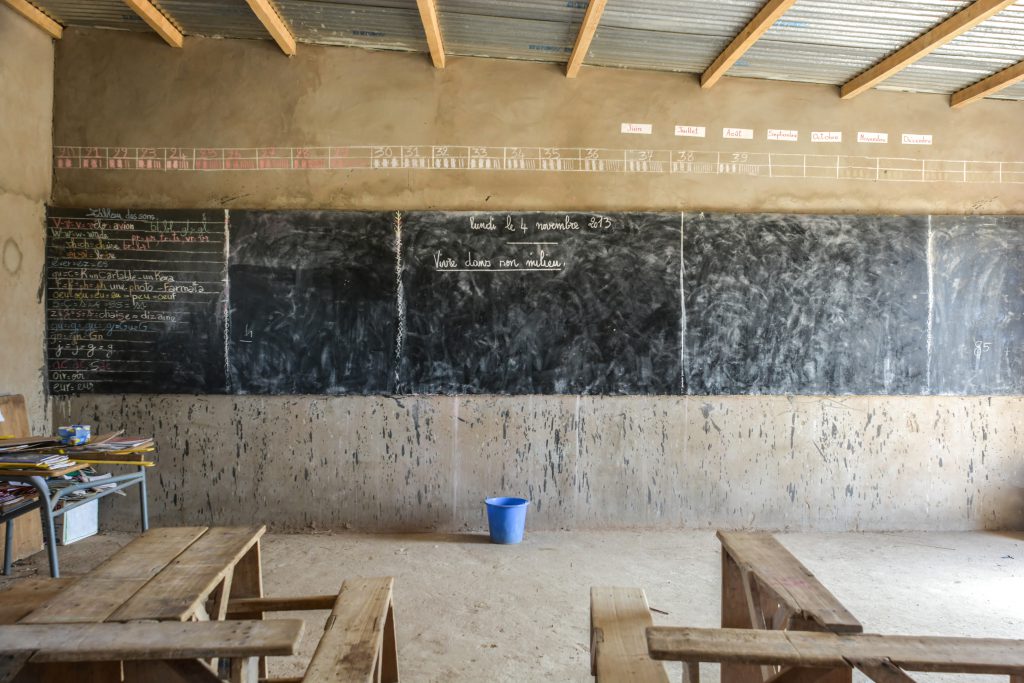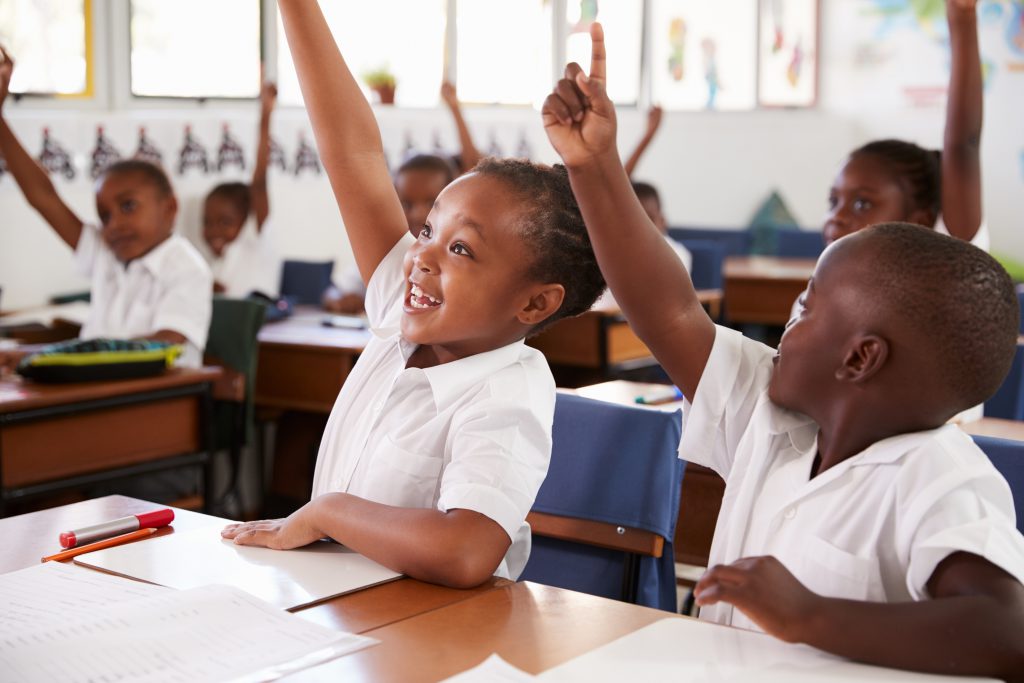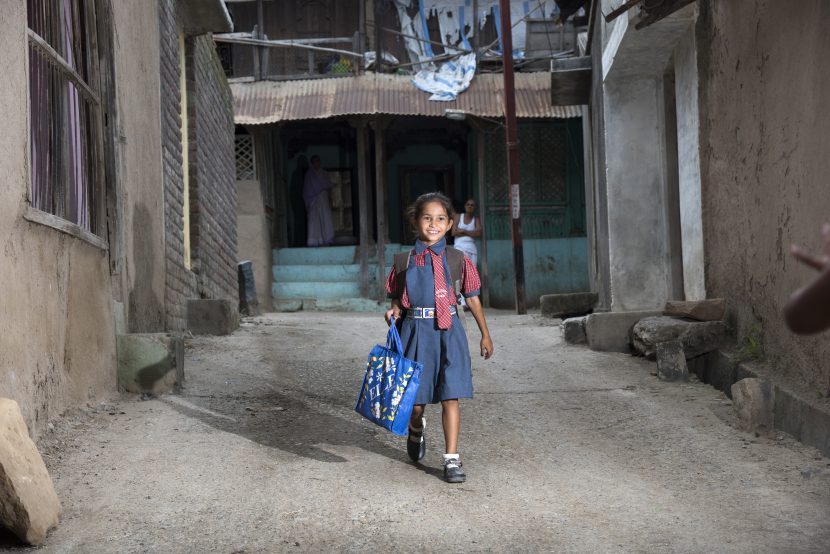Since the adoption of the 2030 Agenda in 2015, children’s rights have always been seen as separate tools which are not explicitly mentioned in the SDGs. But is it really so?
The example of children’s right to education and SDG4 offers the chance to look into the similarities and the differences of these two instruments and to focus on the opportunities of combining them to promote children’s rights and wellbeing.
Children’s rights and the SDGs
The 2030 Agenda for sustainable development was adopted by the UN in September 2015 after years of discussion, global consultations and fraught negotiations (CRIN’s website). Unlike the Millennium Development Goals adopted in 2000, the SDGs are goals set for the global community and not only referred to developing countries.
Moreover, they are a reflection of the current approach to development: they set goals to achieve, they provide indicators to measure and track changes, but they do not provide means to reach them. This is because each single context is different and providing a one-size-fits-all model would not be effective.
The goals focus on sustainable development, they are inextricably linked to the human rights framework generally, and to children’s rights specifically. Children are affected by all of the SDGs, whether poverty (Goal 1), hunger (Goal 2), health (Goal 3), education (Goal 4), gender equality (Goal 5), climate change (Goal 13),violence against children (Goal 16.2) (CRIN’s website), as well as a number of other areas that impact children’s lives.
Despite this apparent focus on children’s interests, the SDG discussions unfortunately left out goals and targets that explicitly address children’s rights, and the adopted agenda neglects a rights framework, failing to appropriately reference children and individuals as rights holders. Where human rights are mentioned, they appear to be deployed as a rhetorical flourish rather than presented as legally-binding commitments and standards which would guide the implementation of the agenda. In neglecting a rights-based framework, the overall narrative of the SDGs is one in which children will continue to be seen as objects of charity rather than as holders of human rights (CRIN, 2015).
The right to education – challenges and opportunities
Children’s right to education is enshrined by Article 28 and 29 of the Convention on the Rights of the Child (CRC). Moreover, the object of the General Comment No. 13 is the right to education (Article 13) which was adopted in 1999 by the Committee on Economic, Social and Cultural Rights with the aim of providing an interpretation and clarification of Article 13 of the International Covenant on Economic, Social and Cultural Rights (ICESCR).
According to the CRC, “the child has a right to education, and the State’s duty is to ensure that primary education is free and compulsory, to encourage different forms of secondary education accessible to every child and to make higher education available to all on the basis of capacity” (Article 28). Moreover, “education shall aim at developing the child’s personality, talents and mental and physical abilities to the fullest extent” (Article 29) (CRC, 1989).
In practice, the situation regarding education around the world is alarming. In fact, globally, more than 600 million children and adolescent of primary and lower secondary school age (55 percent) lacked minimum proficiency in reading and mathematics in 2015. Nearly one fifth of children and adolescents (6 to 17 years old) in the world were out of school, and progress in reaching out-of-school children has stalled (Zamfir, 2019).
Around the world, children are deprived of education and learning for various reasons. Poverty remains one of the most obstinate barriers. Children living through economic fragility, political instability, conflict or natural disaster are more likely to be cut off from schooling – as are those with disabilities, or from ethnic minorities. In some countries, education opportunities for girls remain severely limited.Some of the main challenges are represented by the lack of trained teachers, inadequate education materials and poor infrastructure which makes learning difficult for many students (Unicef, 2021).

These challenges worsened even more due to the Covid-19 pandemic and the digital divide represents an additional element of concern: some two thirds of the world’s school-aged children do not have internet connection in their homes, restricting their opportunities to further their learning and skills development (Unicef, 2021).
Tackling education challenges with SDG4
In this context, the 2030 Agenda represent a great opportunity to tackle some of these challenges thanks to the indicators and goals provided. In fact, the 2030 Agenda contains commitments for children under Goal 4 on inclusive and equitable quality education and lifelong learning opportunities for all. Obtaining a quality education is the foundation for children’s development and empowerment, and for reaching overall sustainable development aims.
Crucially, Goal 4 addresses both access to and quality of education, covering the specific needs of children at particular life stages, including early childhood development, care and pre-primary education (target 4.2). Furthermore, it aims at expanding relevant skills among youth to support access to employment (target 4.4), which is crucial for those children who have reached legal working age (UNHCR, 2016).
States should implement targets relating to education in accordance with the principle of equal opportunity under Article 28 of the CRC. While there has been extensive progress in expanding children’s access to primary education, there are still major shortfalls in education quality and disparities in access to secondary schooling, with millions of girls still being excluded at this level.
It is vital that States take decisive steps to ensure that no child is excluded from education on the basis of their family’s ability to pay(UNHCR, 2016).Even if the 2030 Agenda missed the chance to explicitly address children’s rights, it contains a wide range of references to the CRC, mentioning, for example, the children in conflict with the law, individuals with disabilities, indigenous people, children in vulnerable situations, etc.
These examples underline the huge opportunity offered by the 2030 Agenda and its difference in nature from the CRC. The UNCRC imposes legal obligations on the states parties to respect, protect, and fulfil to the greatest extent possible the rights of the child. On the other hand, the SDGs include jointly established priorities for the international community of a more concrete and practical nature, linked to measurable objectives (Zamfir, 2019).
In this sense, the SDGs can be the metrics and tools to measure and implement the CRC along with all the other human rights instruments which protect and promote children’s rights and child protection. By having specific targets and goals which are linked to the CRC, States have a clear guidance in identifying the possible ways to implement children’s rights in their countries.
“Leave no one behind” also includes children
By design, human rights and the 2030 Agenda are inextricably linked. While a number of the SDGs appear to explicitly apply to children, in fact all the Goals and targets impact child rights.This is the reason why it is necessary to adopt a child rights-based approach for the implementation of the 2030 Agenda.
A child rights-based approach is multi-pronged andmulti-level. It realizes all civil, cultural, economic, political and social rights, and recognizes the inherent links between sustainable development and children’s rights. States should ensure child participation, involve national human rights institutions, and conduct child rights impact assessments that examine the effects of proposed actions on children and fully respect children’s rights (UNHR, 2020).
Its pledge to “leave no one behind”also includes children who face one or multiple intersecting forms of discrimination and threats, many of which have been further aggravated by the COVID-19 pandemic(EEAS, 2021).
In recognising the principle of “leave no one behind” as a central tenet of the 2030 Agenda, States are urged to accelerate implementation of the CRC, including as a cornerstone of national SDG implementation, to provide explicit and comprehensive reporting on the situation of children in all goal-related processes, to conduct meaningful and inclusive consultations with children throughout and to expand children’s awareness of their rights and of the goals, including in schools (EEAS, 2021).
Children are the changemakers
Children should be considered asagents of change. The 2030 Agenda emphasizes the participation of rights-holders as partners in implementation and it recognises children’s role as active citizens in society and social transformation and ensures their right to participate in actions and decision-making processes affecting them, in accordance with their age and maturity.
Child participation is critical for the successful implementation of a universal sustainable development that leaves no child behind, and will accelerate the protection, respect and fulfilment of children’s rights under the Convention. Children should be systematically involved in SDG processes, implementation, and monitoring, and in policy and programme design (UNHR, 2020).

The importance of involving children in expressing their views in matters affecting them is crucial for our team and we work tirelessly to protect children’s rights. We raise awareness of issues concerning children on a daily basis and we run activities where children’s voices can be clearly heard by the relevant institutions and the local communities. We are always looking for somebody new to join our team as a volunteer, or contribute to our work by making a donation, or sponsoring a child!
Written by Arianna Braga
References:
CRC – Convention on the rights of the child (1989), Treaty no. 27531. United Nations Treaty Series, 1577, pp. 3-178. Retrieved from: https://treaties.un.org/doc/Treaties/1990/09/19900902%2003-14%20AM/Ch_IV_11p.pdf. Accessed on 26 June 2022.
CRIN (2015), Children’s Rights and the Sustainable Development Goals, CRINMAIL 1448 – Special Edition on the Sustainable Development Goals. Retrieved from: https://archive.crin.org/en/home/what-we-do/crinmail/crinmail-1448-special-edition-sustainable-development-goals.html#sdgs. Accessed on 26 June 2022.
CRIN’s website, Children’s Rights and the SDGs. Retrieved from: https://archive.crin.org/en/home/what-we-do/policy/childrens-rights-and-sdgs.html#:~:text=Children%20are%20affected%20by%20all,against%20children%20(Goal%2016.2).Accessed on 26 June 2022.
General Comment No. 13: The right to education (Article 13) (1999), adopted by the Committee on Economic, Social and Cultural Rights. Retrieved from: https://www.right-to-education.org/resource/cescr-general-comment-13-right-education-article-13. Accessed on 26 June 2022.
OHCHR’s website, Children’s rights and the 2030 Agenda for Sustainable Development. Retrieved from: https://www.ohchr.org/en/children/childrens-rights-and-2030-agenda-sustainable-development. Accessed on 26 June 2022.
UN (2020), Child Rights and the 2030 Agenda for Sustainable Development Accelerated action and transformative pathways: realizing the decade of action and delivery for sustainable development. Retrieved from:https://sustainabledevelopment.un.org/content/documents/26130Child_Rights_2030_Agenda_HLPF_2020.pdf. Accessed on 26 June 2022.
UNHCHR (2016), Report on the protection of the rights of the child in the implementation of the 2030 Agenda for Sustainable Development. Retrieved from: https://documents-dds-ny.un.org/doc/UNDOC/GEN/G16/433/91/PDF/G1643391.pdf?OpenElement. Accessed on 26 June 2022.
UNHR (2020), Child Rights and the 2030 Agenda for Sustainable Development. Retrieved from: https://sustainabledevelopment.un.org/content/documents/26130Child_Rights_2030_Agenda_HLPF_2020.pdf. Accessed on 26 June 2022.
UNICEF (2016), Mapping the Global Goals for Sustainable Development and the Convention on the Rights of the Child. Retrieved from: https://www.unicef.org/media/60231/file. Accessed on 26 June 2022.
UNICEF (2016), Mapping the Global Goals for Sustainable Development and the Convention on the Rights of the Child. Retrieved from: https://www.unicef.org/media/60231/file. Accessed on 26 June 2022.
UNICEF (2021), Education. Retrieved from: https://www.unicef.org/education. Accessed on 26 June 2022.
Zamfir, J. (2019), Children’s rights and the UN SDGs – A priority for EU external action, EPRS | European Parliamentary Research Service. Retrieved from:https://www.europarl.europa.eu/RegData/etudes/BRIE/2019/642285/EPRS_BRI(2019)642285_EN.pdf. Accessed on 26 June 2022.


